The chief purchasing and supply chain officer, who leads all procurement functions including logistics, gives an exclusive interview on improving supplier relations, planning for the future of the battery supply chain, the growing influence of supply chain costs and localisation, and why Stellantis needs to ensure it has access to critical logistics capacity.

Maxime Picat replaced Michelle Wen as chief purchasing and supply chain officer at Stellantis in June 2022. Now almost two years into the role, and three years after the merger that formed Stellantis, he sits down with Automotive Logistics to discuss his strategy of building resilience in the supply chain by aligning purchasing and logistics, anticipating risk, improving supplier relations, influencing the design of the supply chain and planning for an electric future.
Megan Kelly: What have your first two years in the role been like?
Maxime Picat: The most exciting parts of the past two years have been in parallel with mitigating the crises we faced, related to semiconductors, inflation and logistic tension. So it’s been focused on having my team mitigating those three risks and at the same time building the strategy which is more reliance.
What I’ve changed since taking the job is to strategise how to buy, where to buy, what to buy, and to put focus on understanding the very dynamic and chaotic environment we are working in. It’s about ensuring that we are not just purchasing and supplying, but that we understand where, why and with whom we have to work, so that we will still be able to have the right level of competitiveness and the right level of supply and volumes in an environment which is less and less certain.
Are you using digital tools to help you understand this uncertainty?
We try to guess the future, and for that we’ve got numerous sources, from survey reports to continuous screening of information.
We try to anticipate whether there will be more pressure on one raw material or another, on that commodity or another one. We try to anticipate geopolitics and, more importantly, process those risks, ranking them and deciding the one that we want to tackle, because we can anticipate if [that risk] might come again or it might come soon, or that the impact might be huge. And then consider our day-to-day business and see if what we’ve got in place is enough to tackle any risks.

What have you learned over the past two years to help tackle future risks?
I think the semiconductor crisis has been the most interesting one, because it made us understand that managing our supply chain is no longer just about handling our tier ones like we were doing for decades. Things were happening behind that [tier-1 level], and the automotive industry is no longer an industry of steel, plastics, traditional engine technology, but more and more electronics, more and more chemistry through raw materials and batteries. For those industries, automotive is only one part of their business. So you cannot only rely on your traditional supplier base. You have to understand your tier one to tier-n to understand if there are some potential issues that you will face in the future.
We learned that with the semiconductor crises, and we understood it the hard way. But now we have learned, we have put in place strategies to mitigate risk. For example, with semiconductors, we’ve got direct interaction with the semiconductor players, sometimes directly buying from them. But also, we are imposing to the supply chain – to the tier-1s, tier-2s, tier-3s – the semiconductor we want them to use. That way we can avoid, for example, having too much diversity [of parts] and ensure that they will supply from semiconductor suppliers we are partnering with that will provide enough stock for the full chain to be in a better resilience status than what we had previously. It was interesting in terms of learning how we should manage those depths of the supply chain.
From there we extended that across the full range of what we do. For example, with battery raw materials, if we don’t do anything, one of these days one of our battery suppliers will tell us, ‘I don’t have enough lithium, so I have to allocate what I’ve got to a different customer’, the same as what we faced with semiconductors. We don’t want that to happen again, so we are taking an equivalent kind of strategic plan.
”What we’ve got at Stellantis today is an excellent collaboration between engineering and purchasing, where we’ve got a cross functional group with the two teams working and asking themselves the question of what the relevant supply in the future is, and they consider supplier-based and technical solutions to ensure competition and resilience.” - Maxime Picat, Stellantis
So you’re influencing the supply chain and manufacturing end-to-end?
Sure. And that’s interesting, because that really shows that the role of purchasing and supply chain is not about just taking technical specification, coming from engineering and finding someone to procure it. That’s far from being enough.
What we’ve got at Stellantis today is an excellent collaboration between engineering and purchasing, where we’ve got a cross functional group with the two teams working and asking themselves the question of what the relevant supply in the future is, and they consider supplier-based and technical solutions to ensure competition and resilience.
Join us at Automotive Logistics and Supply Chain Europe, March 19-21 in Bonn, Germany, where major OEMs, suppliers and industry experts will be discussing topics such as logistics as a competitive advantage, reducing complexity, increasing flexibility and maximising capacity.
ALSC Europe takes place 19-21 March, Kameha Grand Bonn, Germany.
How has this played into your battery supply chain strategy at Stellantis?
First we have to understand that we are at the crossroads of a new commodity in vehicles, which is chemistries that honestly were very limited in the past. It’s fast growing, because it’s about going from zero to 100%, maybe in a few decades on an ever-evolving chemistry. I mean, nobody knows what the reigning chemistry in the end will be. There are five or six potential chemistries I could name that maybe will win, and we do invest in some start-ups and companies that master those technologies. Some will fail, some will win. It’s super fast moving.
With the speed at which that industry is taking off, we needed to secure some capacity. We have secured many partnerships, mostly through joint ventures with actors that are on the market across Korean and Chinese players and in the specific case of ACC (Automotive Cells Company), which is a European battery player that we are also a shareholder in, and with Saft battery company with Mercedes-Benz. We have secured through those joint ventures enough capacity to cover up to 2027-2028 and ensure that we will have the control on the cost, on the technology and on the capacity, ensuring that we can have that ramp-up secured.

And that’s only the battery part of it. Beyond that, there is everything which is happening before such as the cathode active material (CAM), pre-CAM, and then the refined raw material and the mining - the full chain. We decided to go on both ends. First JVs of gigafactories of batteries, and buying mines, putting equity in mines once again to ensure that we have the full control of the cost, of the volumes that the mine would be able to deliver. And then we just had to close the loop by securing the raw materials that go through the chain up to the battery.
That’s not something that is new to us, because in the ICE world, the ancient world, we have been buying palladium, rhodium and platinum which are used in the exhaust pipes. We buy it, we give it to the different players that are making all the steps up to the final exhausts that ship back to us. It’s the same strategy with the batteries. We buy lithium, cobalt and manganese, we give them to the actors that are making the CAM and pre-CAM and the battery, and we take back the battery at the end. So that’s what we have built to ensure the resilience of that part of the business.
”We’ve identified that we cannot manage outbound logistics like we manage inbound logistics or some other commodity. What we have learned is that not controlling anything was not good enough, because our capacity to react was absolutely limited.” - Maxime Picat, Stellantis
How have logistics capacity issues developed over the last two years?
I think starting with Covid, supply chain logistics have been really facing strong disturbances, but what we’ve seen since then is that the capacity of inbound converged quite quickly, and we were able to find capacity to move any part from any place to any other place through trucks, vessels and trains. There was a burst in cost and then continuous improvement and back to pre-crisis kind of levels.
On the outbound side, it took far longer to get the capacity back, but the situation has improved since summer last year. We are just starting to see the cost reducing, which is good news, but definitely not back to a pre-crisis level.
It’s interesting to try to understand why those two parts of logistics are not following the same path. And it’s mostly related to the specific assets. A train, a truck or vessel moving finished cars is not the same as the one moving parts, so any shortage tension you’ve got is multiplied by ten, and your capacity to find an alternative is limited. We’ve identified that we cannot manage outbound logistics like we manage inbound logistics or some other commodity. What we have learned is that not controlling anything was not good enough, because our capacity to react was absolutely limited. In outbound logistics, the final step to our final customer which is very critical to our revenue, to be blind and not to have the capacity is an issue. We have started to fix it and look at where there are some inefficiencies, or lack of capacities or risk, maybe in countries where we’ve got big business, but less assets available. That’s where we made some moves to ensure that it’s part of the business that we can better control. It doesn’t mean we want to control everything and verticalise everything, but there are some elements that cannot be 100% out of our reach. We need to have a minimum level of control, and that’s what we try to size up and optimise and do it wisely on a case-by-case basis.
Where do you see opportunities to reduce cost?
Honestly, there are opportunities everywhere. We now have a better understanding of the depth of the supply chain, a better usage of the worldwide flows that we’ve got, and that’s giving us lots of opportunities.
The more we become Stellantis, the more we see opportunities everywhere. This is only the beginning.

Maxime Picat: Bringing supply chain’s influence to top management
Maxime Picat has been chief purchasing and supply chain officer at Stellantis since June 2022, where he is a member of the the carmaker’s Top Executive Team. He has global responsibility across procurement, supply chain and logistics functions, he points to the increasing role and influence of the department, including how supply chain-related costs, inventory and delivery performance are being factored into sourcing and localisation decisions.
Picat first joined then PSA in 1998, holding various roles in manufacturing and plant leadership roles at plants in Mullhouse and Sochaux, in France, before leading the carmaker’s joint venture plant in Wuhan, China from 2007. He would go on to key leadership roles at Dongfeng Peugeot Citroën Automobiles in China, including as managing director from 2011. In 2012, he was appointed chief executive officer for the Peugeot brand, and later executive vice-president for Europe.
With the creation of Stellantis in January 2021, he was appointed chief operating officer for Enlarged Europe.
Picat has a degree in civil engineering from the École des Mines in Paris.
Topics
- ALSC EUROPE 24
- Asia
- Battery Supply Chain
- Digitalisation
- Editor's pick
- Electric Vehicles
- Europe
- features
- Finished Vehicle Logistics
- Inbound Logistics
- Interviews
- Inventory management
- Kaizen & Continuous Improvement
- Lean Logistics
- Logistics service provider
- News
- North America
- People
- Purchasing
- Rail
- Road
- Service Part Logistics
- Shipping
- Stellantis
- Supply Chain Planning
- Sustainability
- Top stories







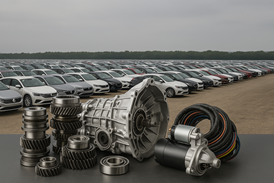

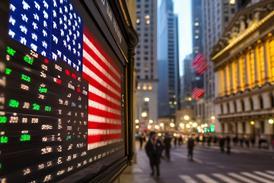
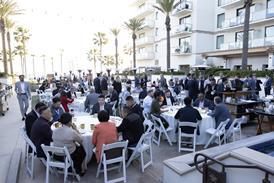







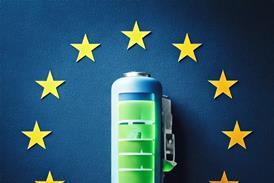







![Global[1]](https://d3n5uof8vony13.cloudfront.net/Pictures/web/a/d/s/global1_726550.svgz)

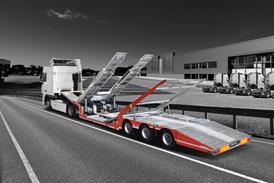

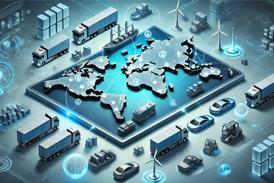



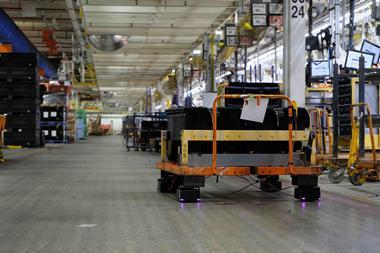


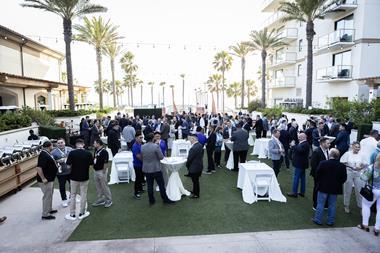



No comments yet